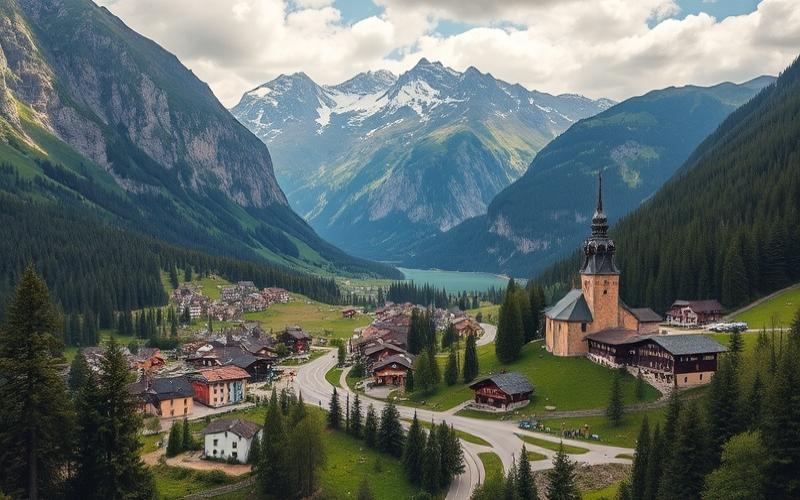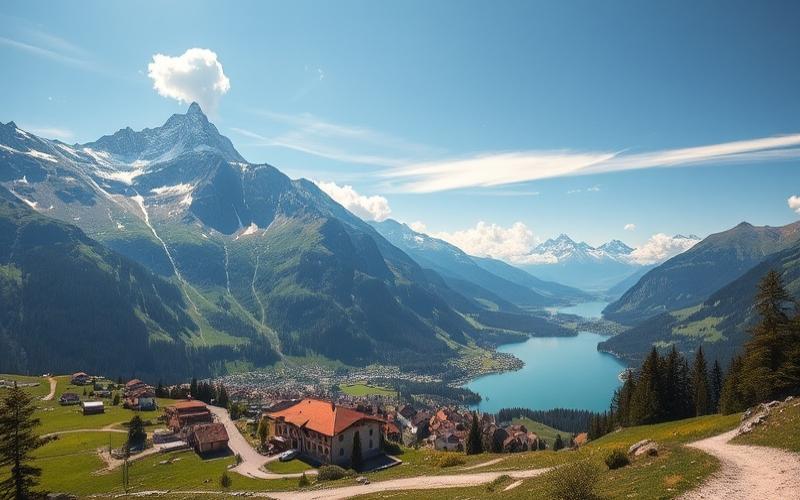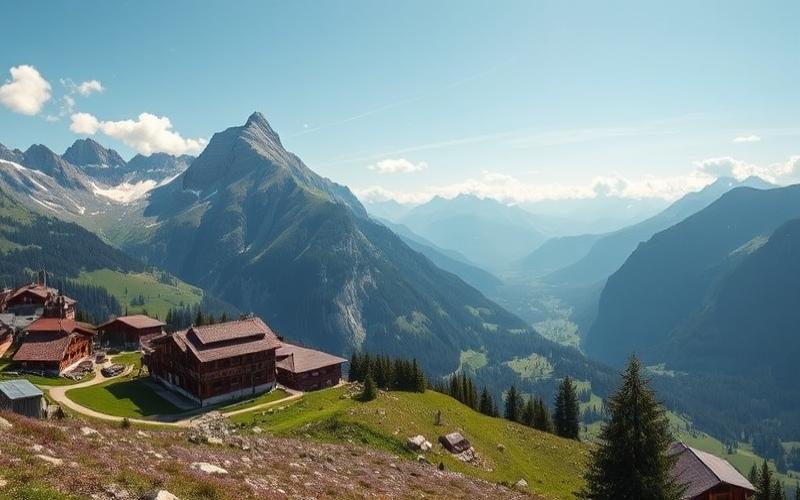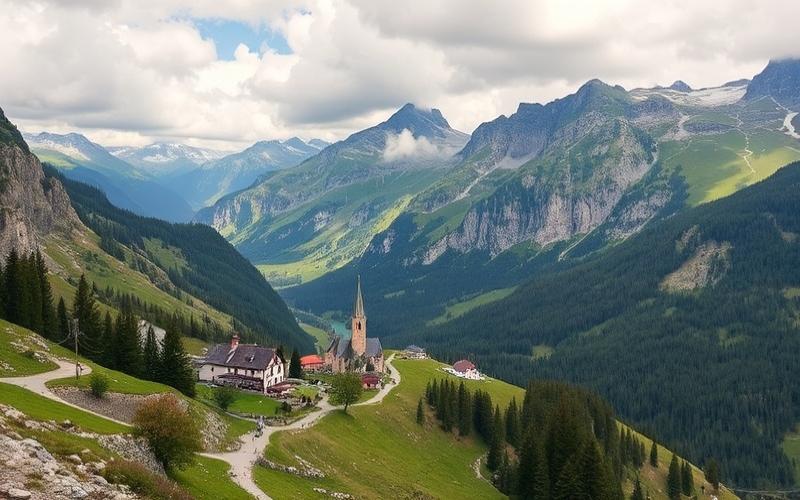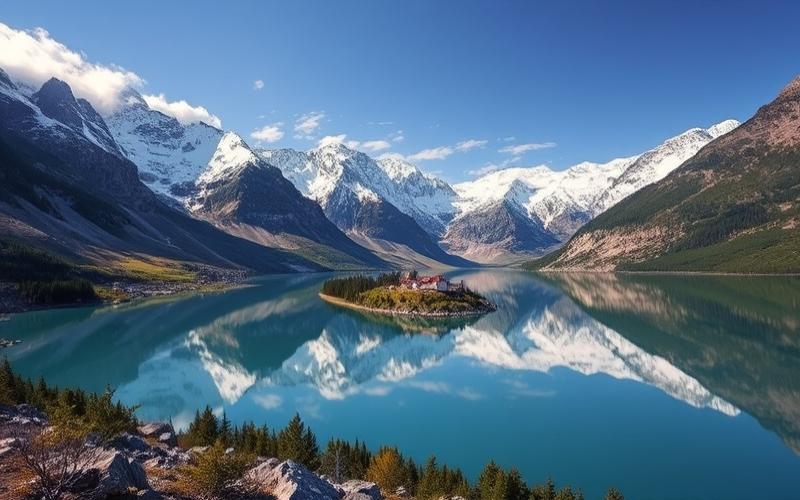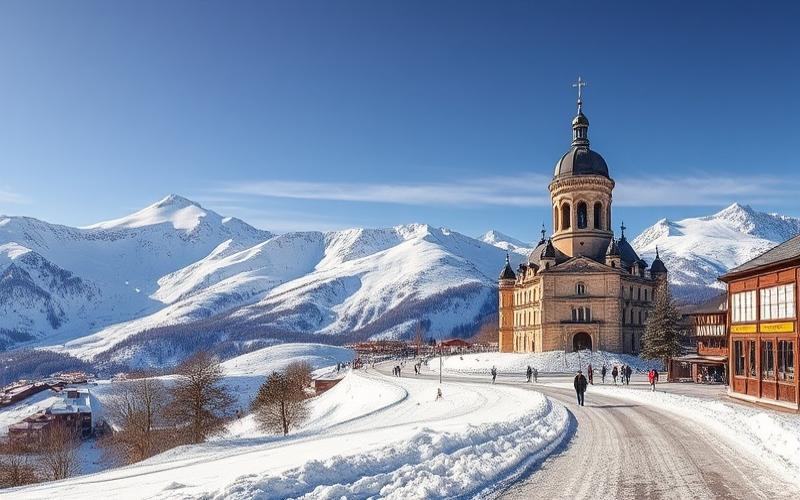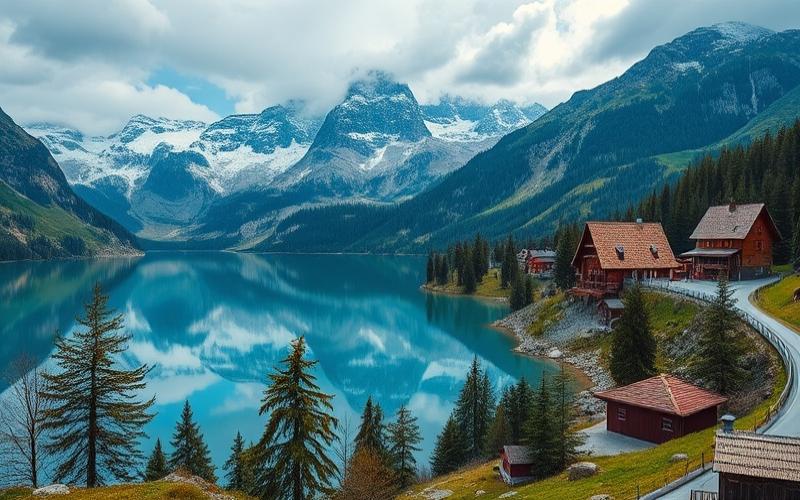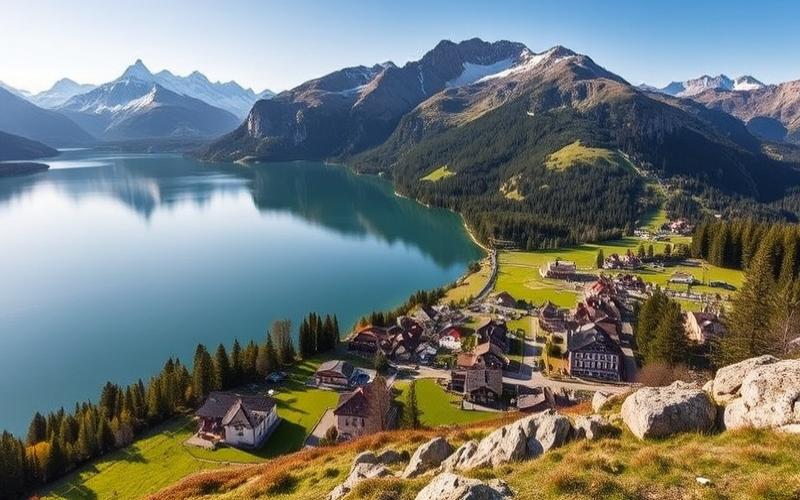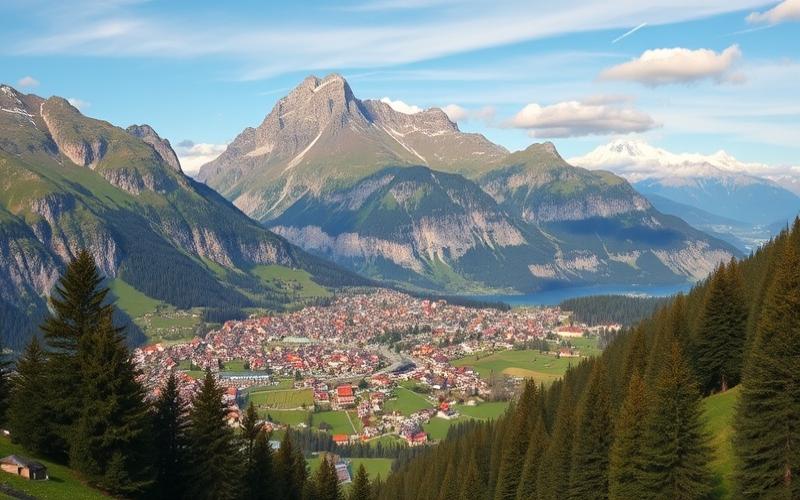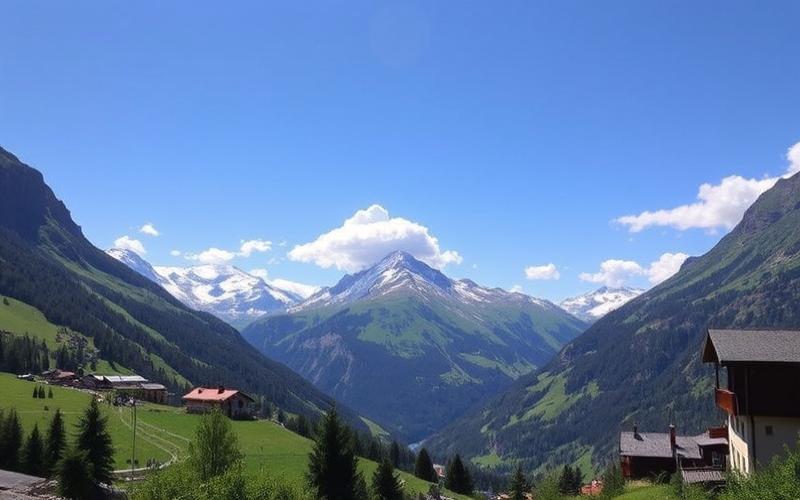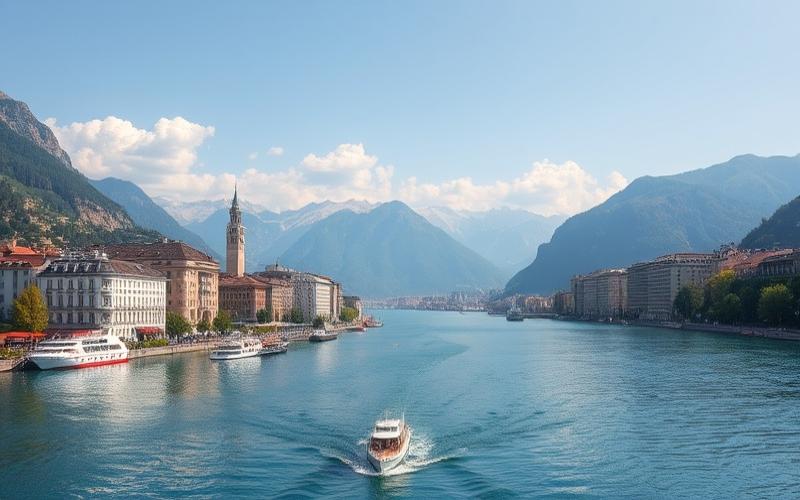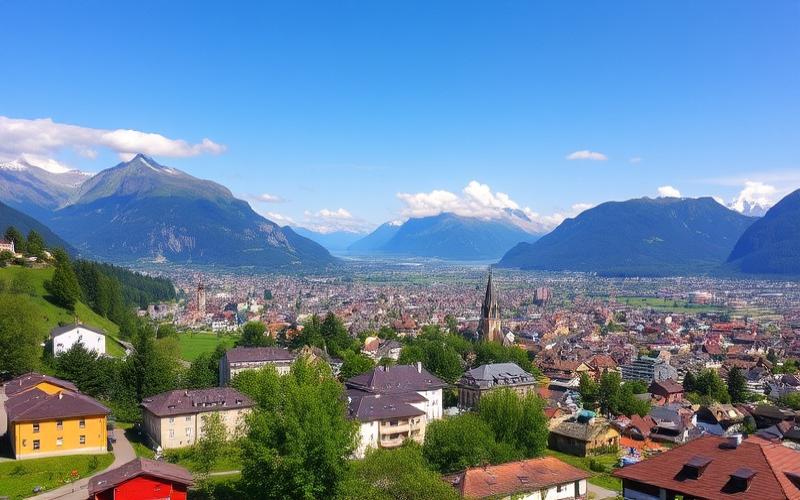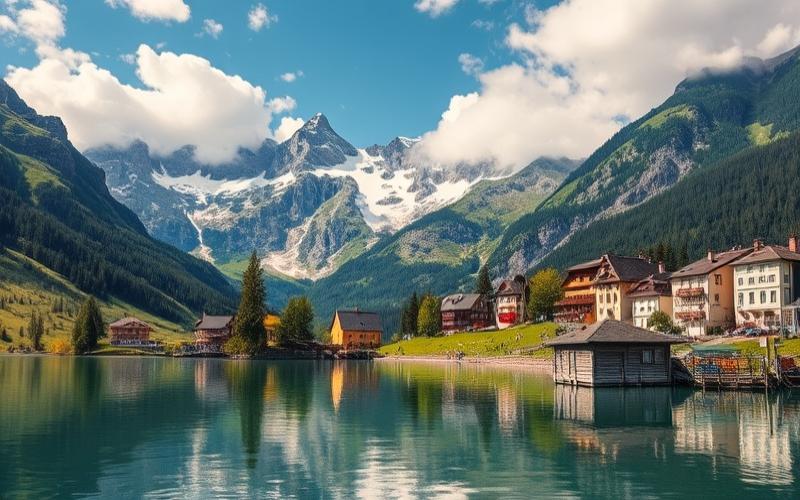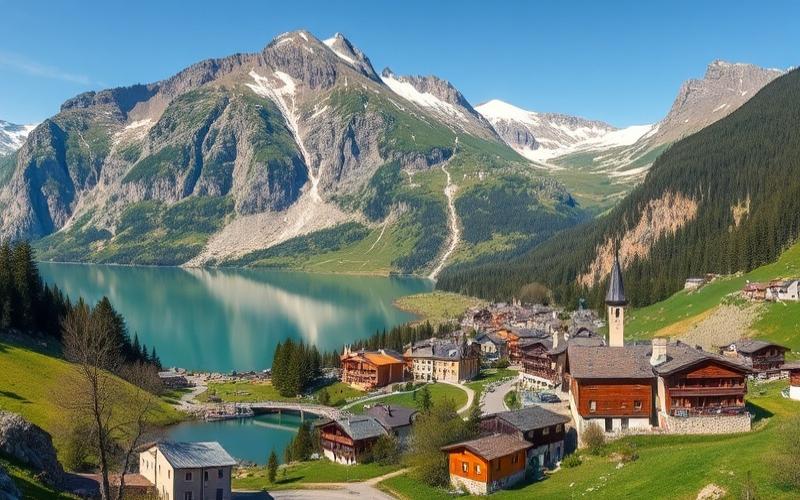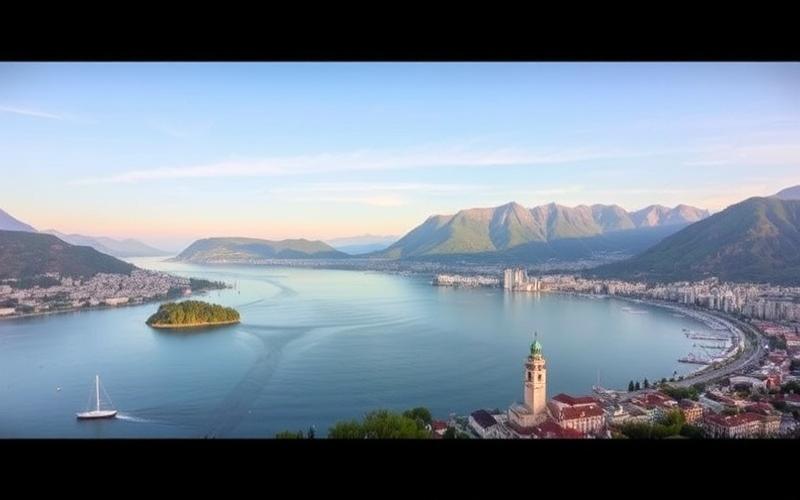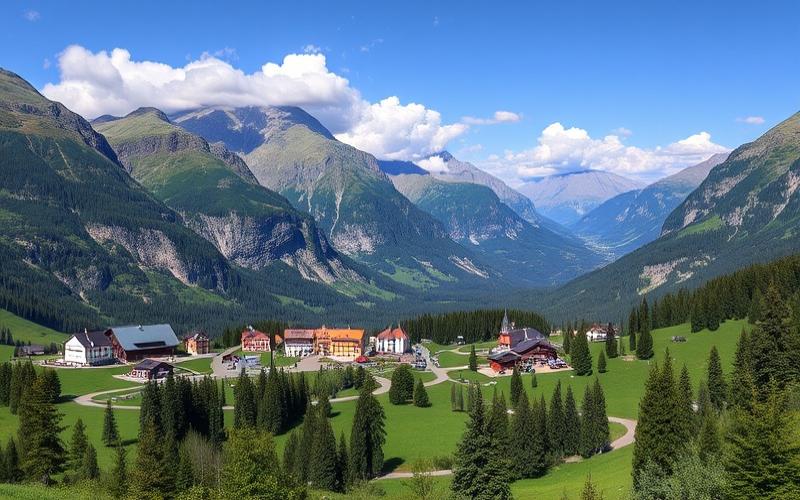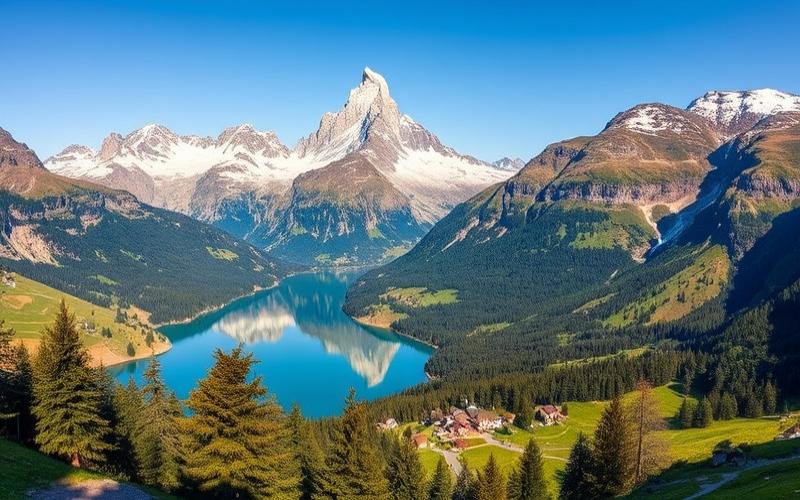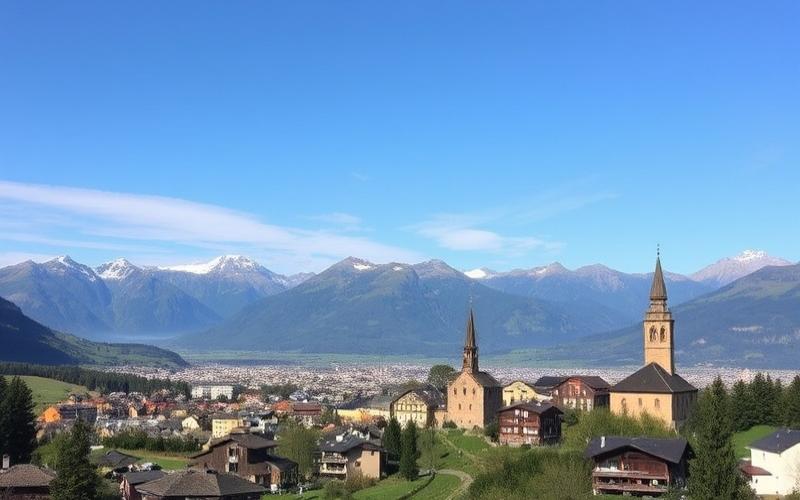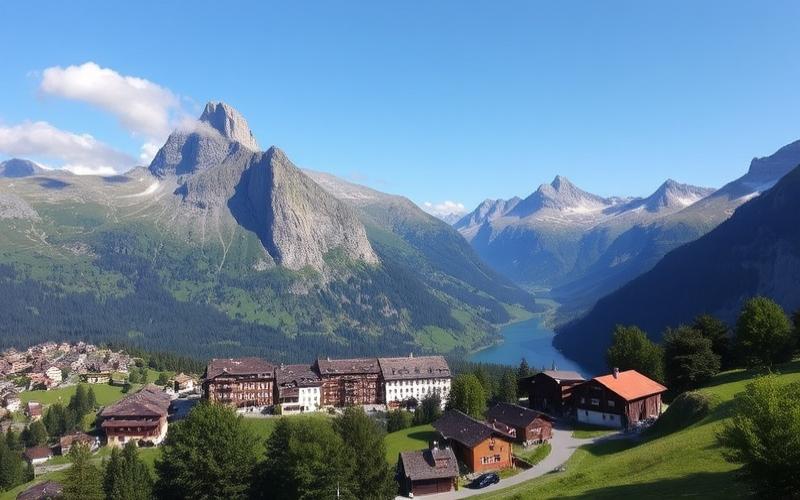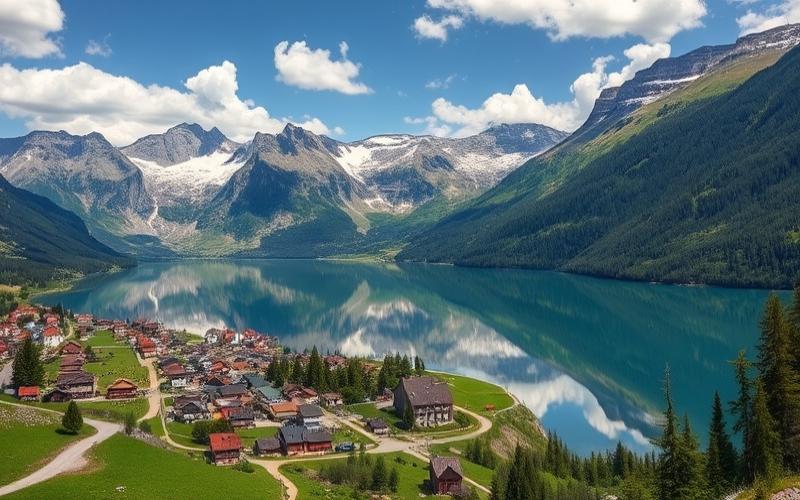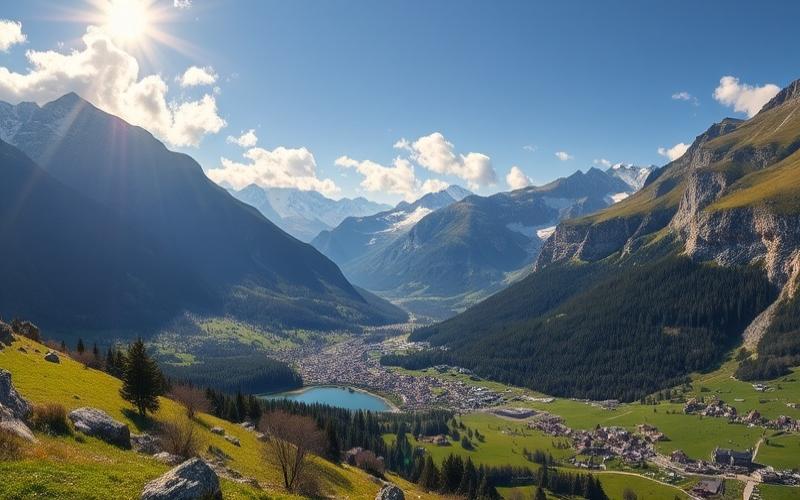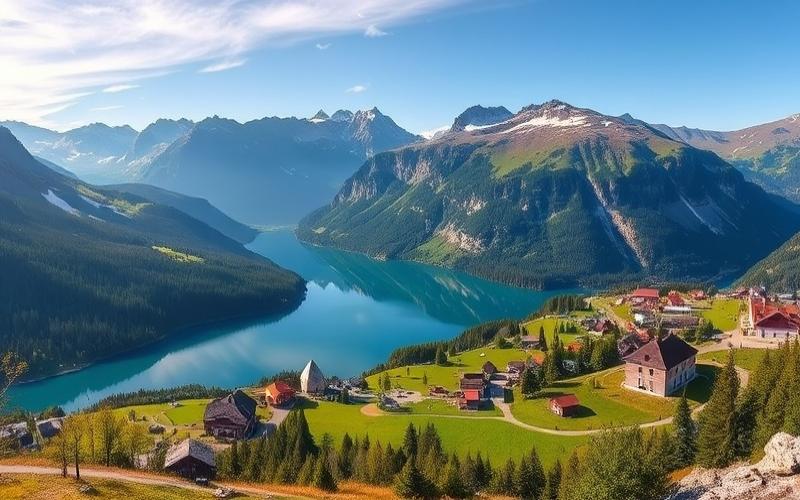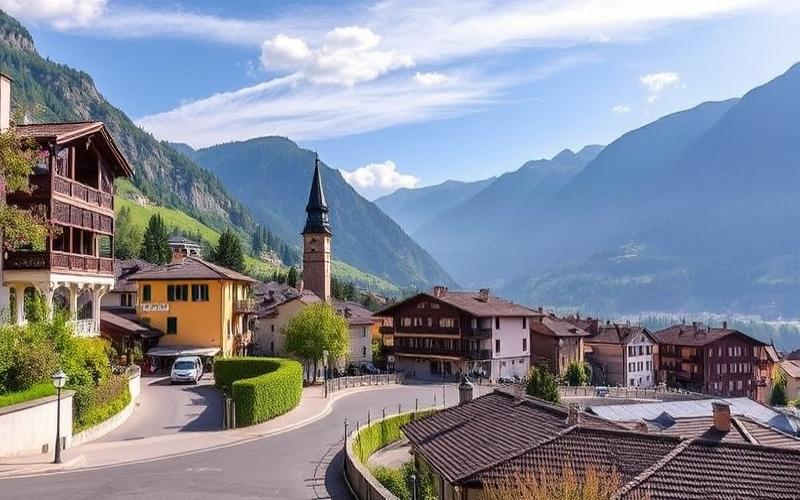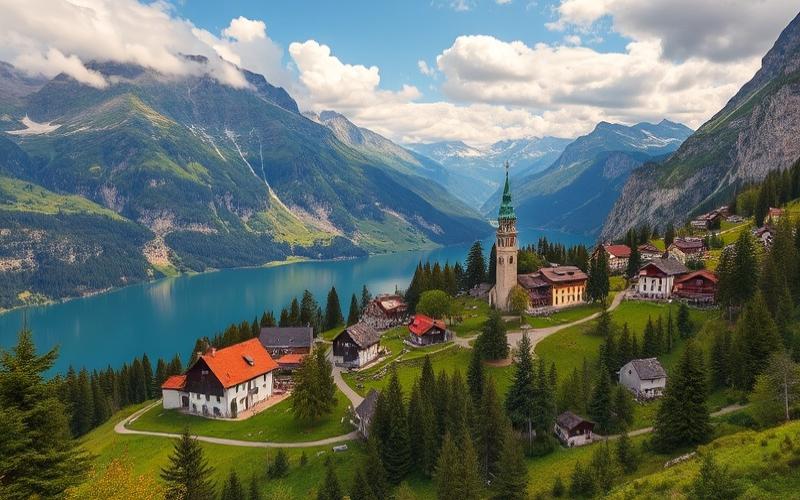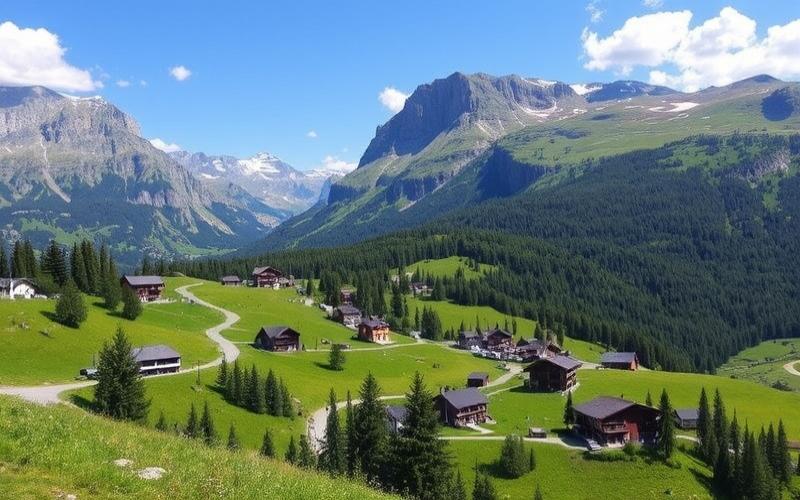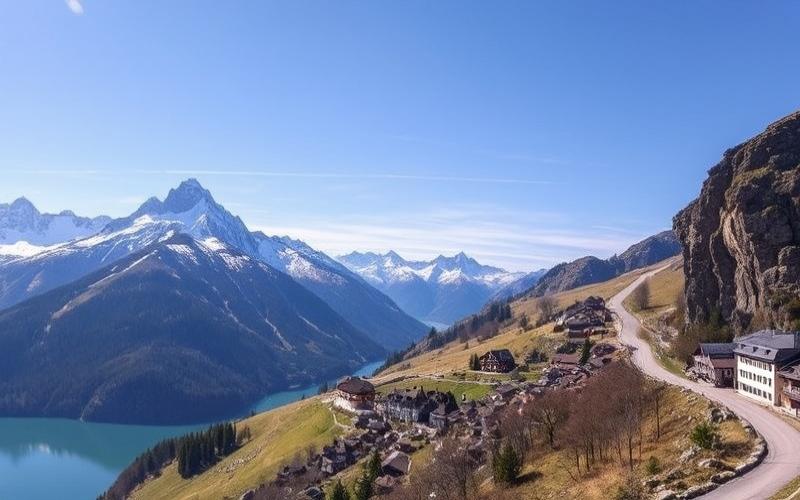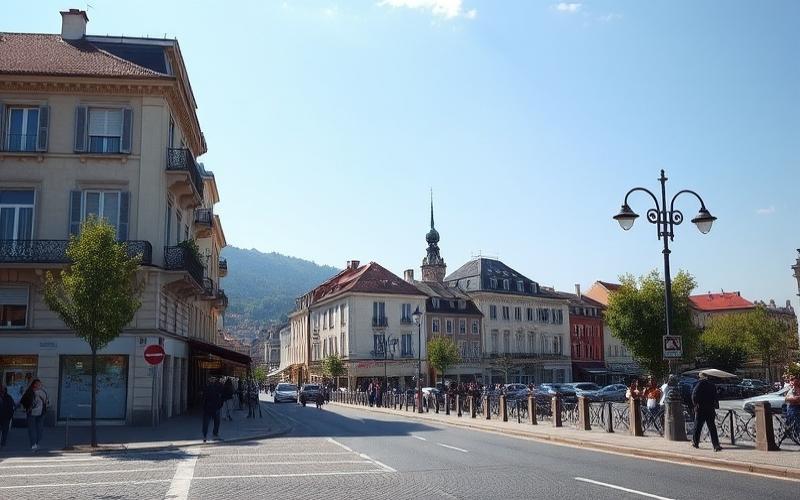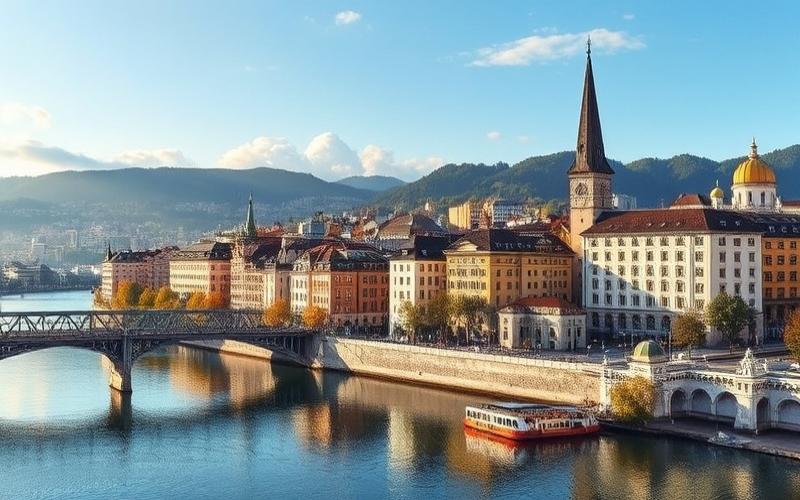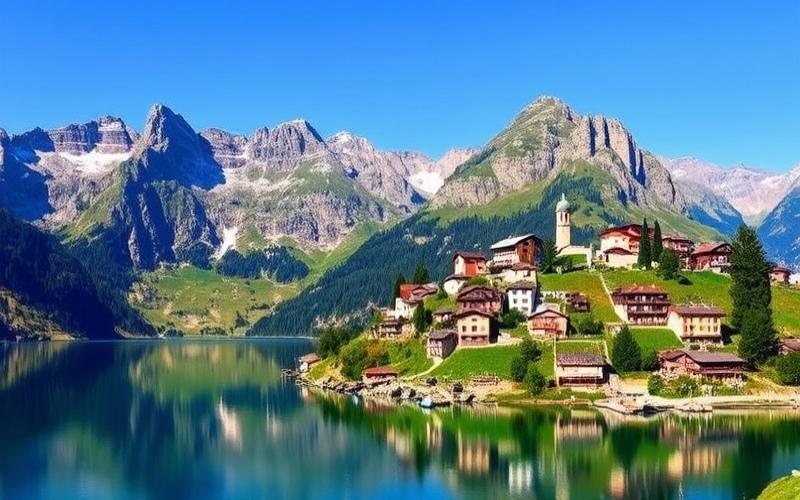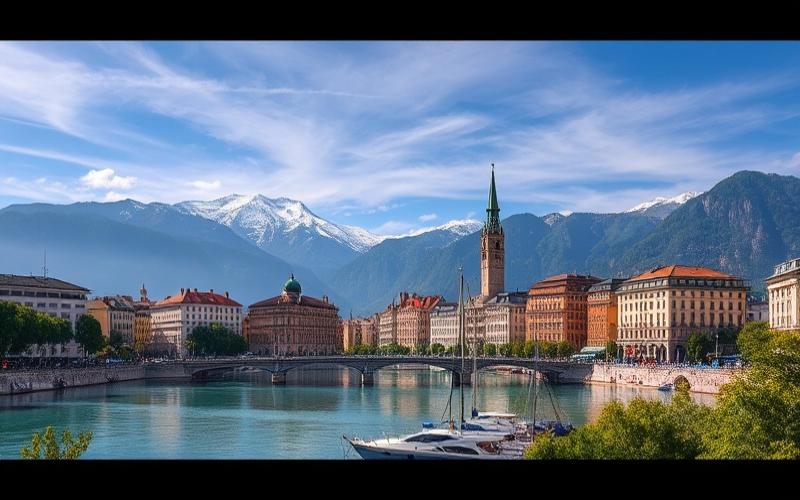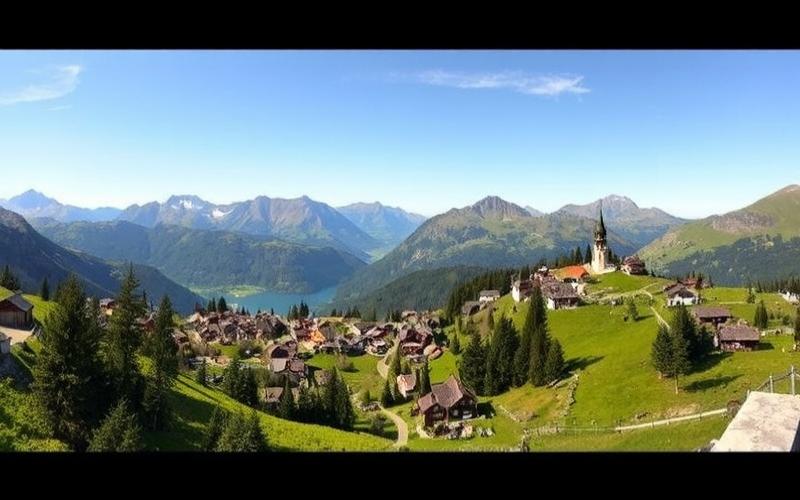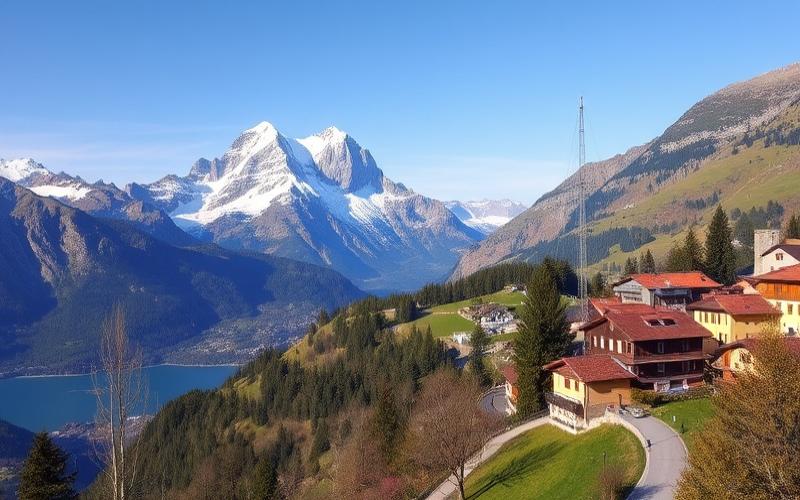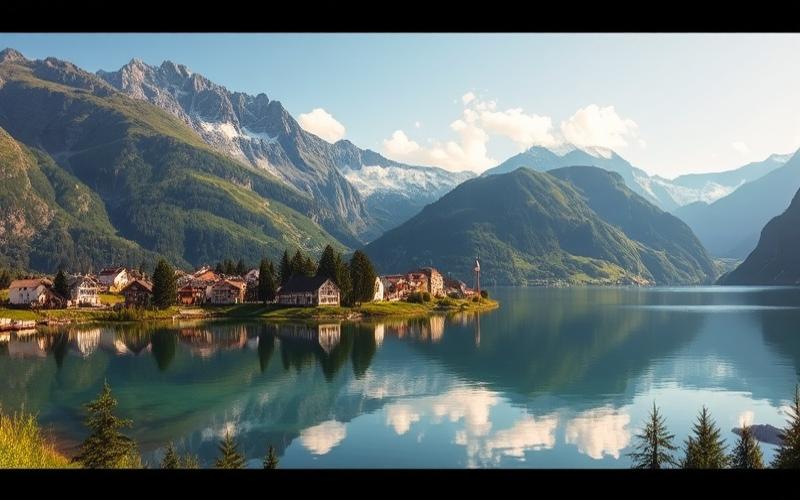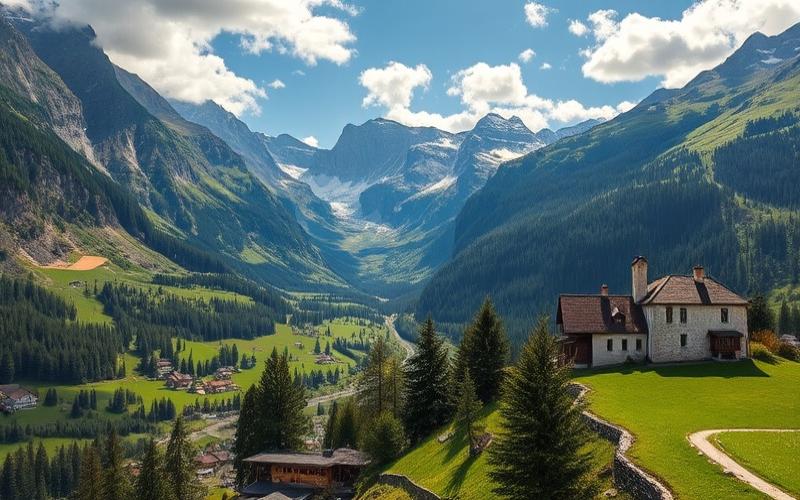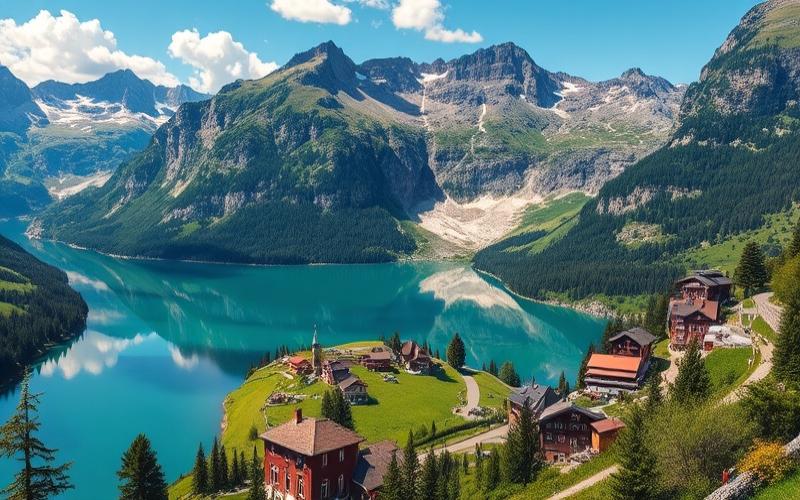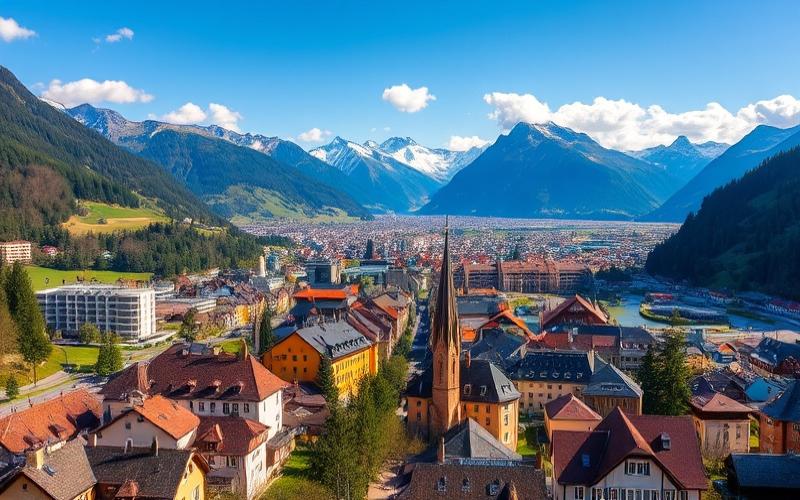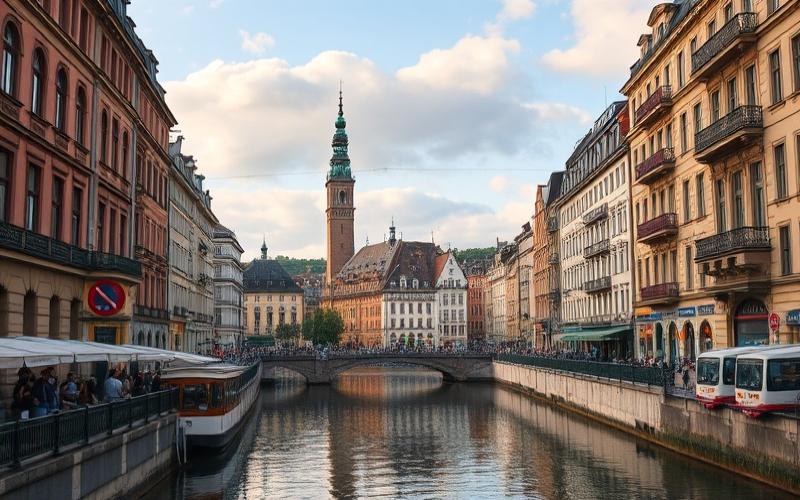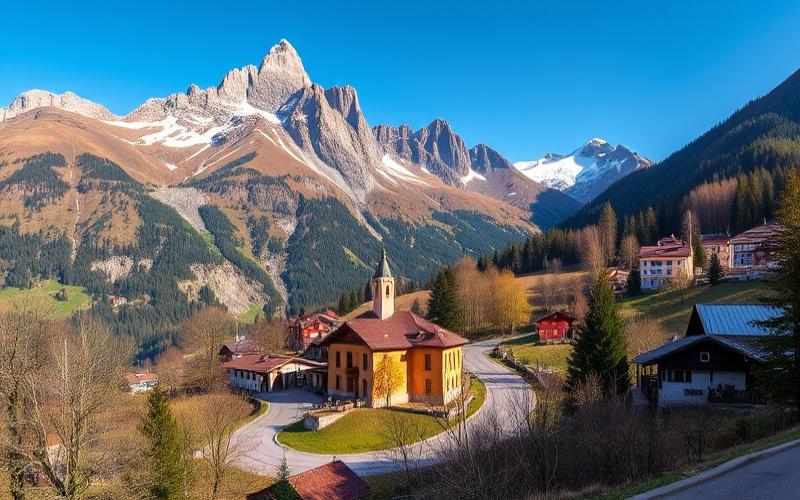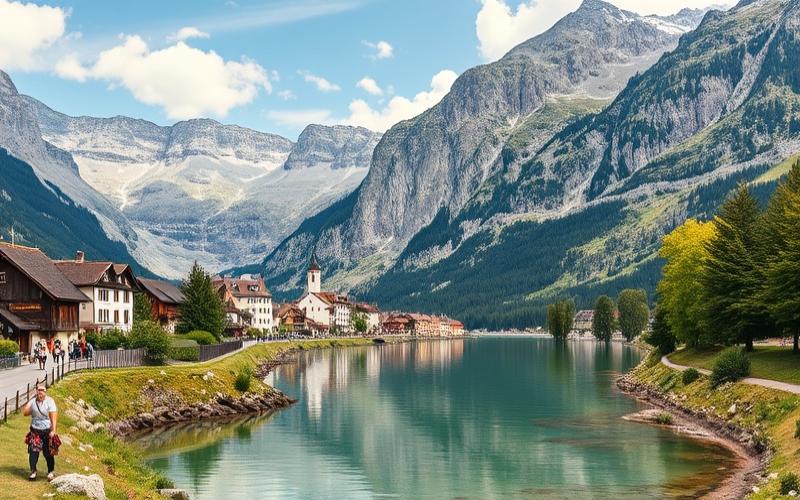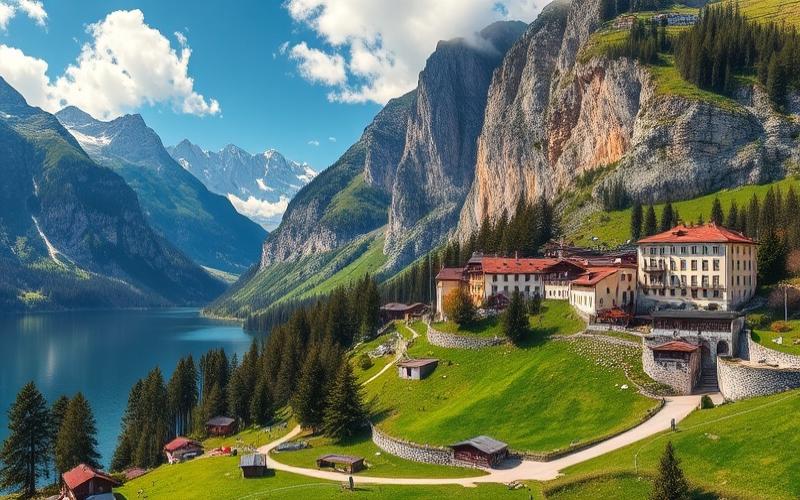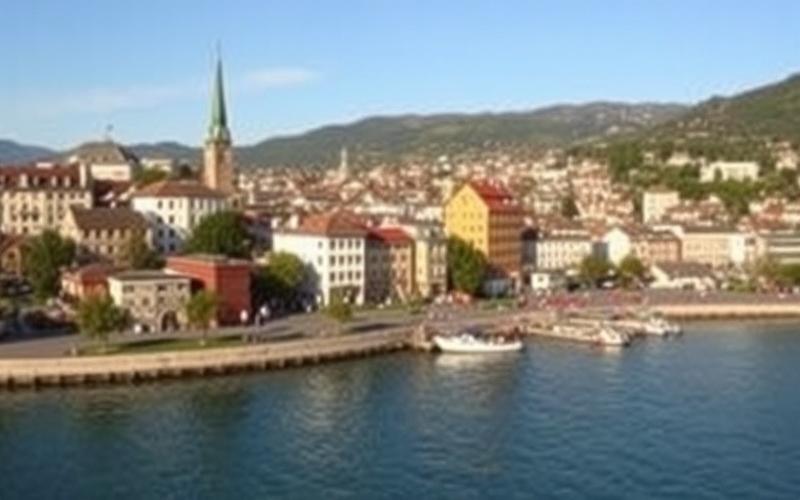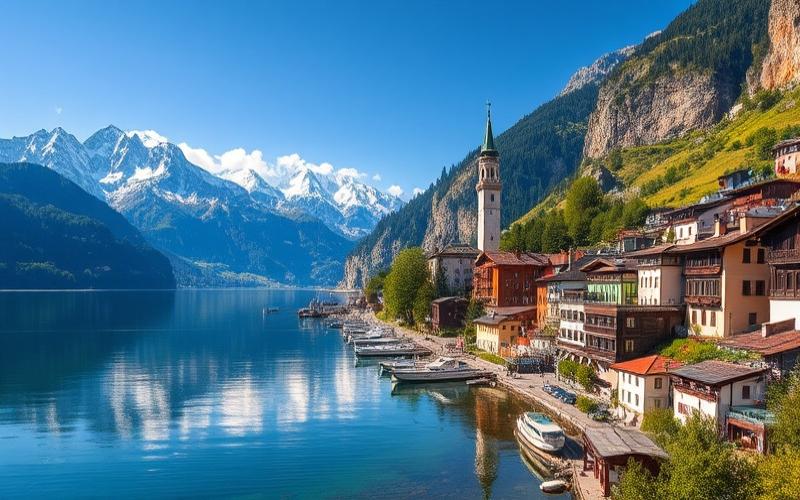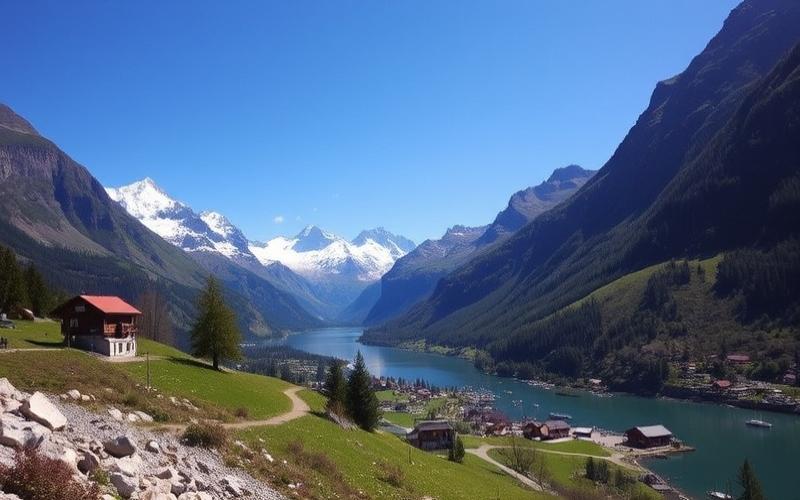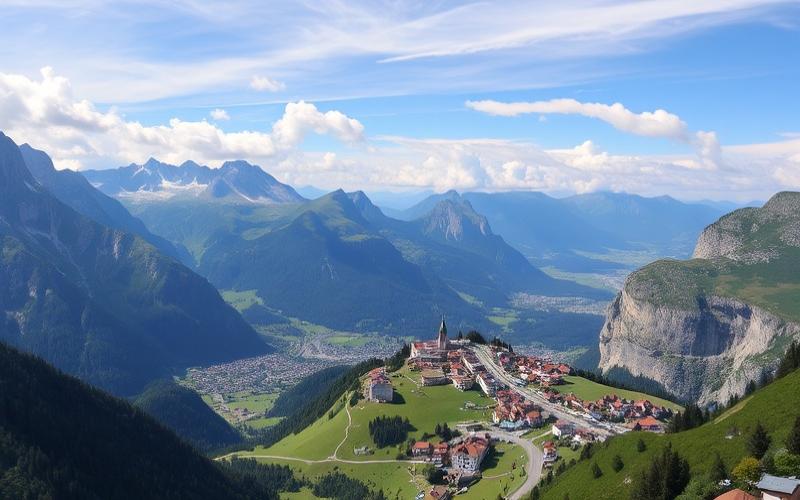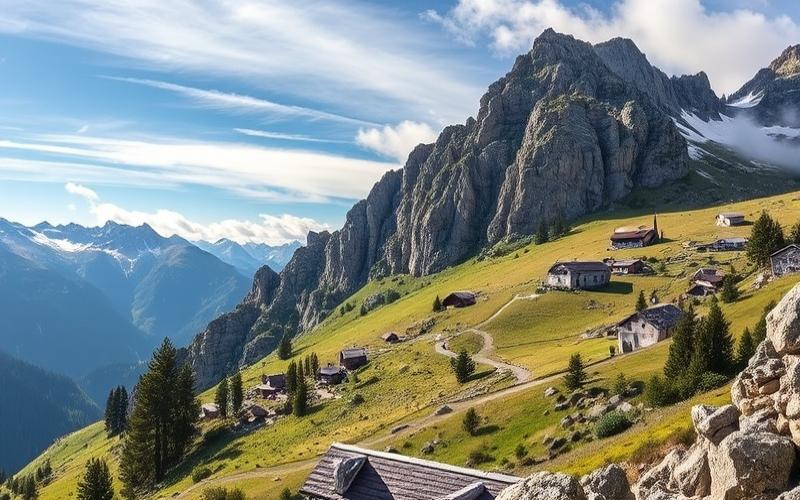
 Published on and written by Cyril Jarnias
Published on and written by Cyril Jarnias
As we approach 2025, investing in authentic Swiss villages is emerging as a promising opportunity, blending picturesque charm with economic potential. With their breathtaking landscapes and rich cultural traditions, these villages appeal to both tourists and investors seeking to maximize their capital in a stable and secure environment.
As the country increasingly embraces sustainable and community-oriented lifestyles, Swiss villages offer unique prospects for those looking to engage in sustainable development projects and benefit from government economic incentives.
Discover how these hidden gems combine tradition and modernity to become unprecedented havens of profitability.
Investment in Swiss Villages: An Opportunity to Explore
Swiss villages stand out as a unique investment opportunity due to their combination of several major assets:
- Picturesque alpine landscapes and preserved natural environment
- Rich cultural heritage, living traditions, local festivals, and authentic architecture
- Exceptional economic and political stability, providing security for invested capital
- High-quality construction and strict adherence to environmental standards
Tax Incentives and Government Initiatives
Several Swiss cantons offer tax incentives to attract investors to village regions:
- Tax reductions on rental income or wealth for acquiring properties intended for seasonal rental or tourism development
- Tax relief for renovations aimed at preserving local built heritage or improving energy performance
Government initiatives also support local development:
- Grants for renovating older buildings to preserve village architectural authenticity
- Programs promoting the establishment of local entrepreneurs (family hotels, craft activities)
- Regional plans encouraging sustainable tourism with local product promotion and cultural circuits
Growing Demand for Second Homes
Demand for second homes is increasing significantly in Swiss villages:
Key drivers include:
- Search for peaceful settings away from urban hustle
- Appeal to families seeking year-round accessible alpine or lakeside residences
- Rise in remote work enabling city dwellers to invest outside urban areas while staying connected
This trend is accompanied by steady appreciation: over twenty years, Swiss real estate has seen over 80% growth, particularly in these sought-after areas.
Geographic Advantages: Urban Proximity Without Sacrificing Tranquility or Authenticity
Villages often benefit from quick access to major cities (Geneva, Zurich, Lausanne), enabling:
| Advantage | Swiss Village | Major City |
| Tranquility | Yes | No |
| Local Authenticity | Preserved | Lesser |
| Access to Urban Services | Within 1 hour | Immediate |
This balance attracts both private investors and professionals seeking an attractive yet connected living location.
Concrete Examples of Successful Projects
Here are some examples illustrating this dynamic:
- Successful transformation of traditional chalets into high-end lodgings in Grisons with cantonal grants for eco-friendly renovations.
“Val Lumnezia” Project: recent creation of premium lodges integrated into the mountain landscape; average annual occupancy rate exceeding 85%.
“Green Villages” Initiative in Valais: complete rehabilitation of the old town around soft tourism (marked hiking trails) that boosted tourist numbers while keeping the local population active.
These examples show that investing in a Swiss village combines secure asset returns, unparalleled quality of life, and active participation in maintaining the local social fabric.
Good to Know:
Investing in Swiss villages offers a unique opportunity thanks to picturesque landscapes and rich cultural heritage, supported by notable economic stability. Tax incentives are attracting more investors, backed by government initiatives aimed at stimulating local development. With growing demand for second homes and vacation properties, these regions are becoming sought-after locations. Proximity to major Swiss cities allows enjoyment of village authenticity while staying connected to economic centers. Successful projects like the revitalization of Andermatt village demonstrate the potential of these initiatives, offering a harmonious blend of modern development and preservation of traditional character.
The Strengths of Rural Real Estate in Switzerland
Rural real estate in Switzerland attracts with the authenticity and timeless charm of its villages, offering an exceptional living environment. These regions provide a peaceful atmosphere, preserved natural surroundings, and strong social cohesion. Quality of life is enhanced by beautiful alpine landscapes, proximity to nature, and a dynamic local cultural offering.
Simultaneously, infrastructure evolution plays a key role: modernized roads, improved access to public transport, fiber optics, or renovated schools accompany development while respecting local architectural heritage. New real estate projects frequently incorporate traditional elements (gabled roofs, wooden facades) to preserve regional identity while meeting contemporary standards.
Attractive Prices Compared to Urban Areas
| Sector | Average Price per m² (CHF) | Annual Change (%) |
| Rural | 4,000 – 7,500 | +3 to +4 |
| Urban (city centers) | 10,000 – 18,000 | +2 to +3 |
This difference not only makes property ownership more accessible but also offers interesting long-term appreciation potential. Growing enthusiasm for natural and peaceful spaces boosts demand: a significant increase in transactions for single-family homes or village properties has been observed over the past two years.
Strong Government Support
The Swiss government actively supports this dynamic through its national strategy focused on sustainable development: subsidies for energy-efficient upgrades of older buildings, tax incentives for green investments, and strict protection of rural landscapes. This stable regulatory framework reassures both private and institutional investors.
Tax Incentives
- Temporary reductions in transfer taxes
- Specific deductions for ecological work
- Targeted cantonal support in certain priority zones
Recent Examples
- Complete renovation of a traditional farmhouse in Valais canton sold for CHF 1,150,000 after conversion into eco-friendly family homes.
- Pilot project in a Vaud village integrating twelve passive houses with municipal financial participation.
- Record sale in a Grisons hamlet where a restored terraced house sold for nearly double its estimated price five years earlier.
As the search for harmonious spaces combining modern comfort and strong local roots intensifies, Swiss rural real estate confirms its asset strength and lasting attractive potential for both private housing and diversified investments.
Good to Know:
Rural real estate in Switzerland attracts with the authentic charm of its villages, offering exceptional quality of life while benefiting from modernized infrastructure that respects heritage. With generally more attractive prices than in major cities, investing in these regions presents long-term appreciation potential as demand for natural environments grows. The government strategy focuses on sustainable development, favoring rural real estate through tax incentives and accommodating legal frameworks. For example, in Gstaad, a recent real estate project attracted investor interest through modern amenities integrated into a traditional setting. These thoughtful initiatives encourage exploring investment opportunities and accentuate the current trend toward peaceful living spaces.
Preserving and Enhancing the Authenticity of Swiss Heritage
Preserving the authenticity of Swiss heritage relies on a combination of innovative and traditional approaches, centered around conservation, enhancement, and sustainable development. Several local and national initiatives structure this approach.
Main Preservation Approaches:
- Legal Protection and Registration: Switzerland incorporates built culture into its legislation, serving as a model for qualitative management of historic sites while embedding sustainability goals in territorial planning.
- Financial Support: Public aid is granted to restore or maintain cultural assets. This support is reinforced by encouragement prizes such as those awarded by ICCROM.
- Multi-Stakeholder Dialogue: Experience sharing among local communities, site managers, international organizations (UNESCO), private investors, and associations enhances technical capacity and project efficiency.
- Participatory Enhancement: Approaches systematically include local communities to ensure they are active in preservation while guaranteeing living cultural continuity.
Challenges Related to Modernization:
Preserving cultural integrity in the face of modernization involves:
- Adapting buildings to current energy standards without altering their historical appearance
- Discreetly integrating modern infrastructure (fiber optics, soft mobility)
- Promoting sustainable rather than mass tourism
Concrete Examples of Swiss Villages That Have Achieved This Balance:
| Village | Actions Taken | Results Achieved |
|---|---|---|
| Lavaux | UNESCO protection, coordinated vineyard renovation | Maintained traditional vineyard landscape |
| Gruyères | Controlled restoration of medieval center | Managed tourist influx |
| Evolène | Preservation of Valais architecture | Enhanced craftsmanship & local identity |
Economic and Cultural Benefits:
- Increased responsible tourism appeal
- Creation of specialized local jobs (restorers, guides)
- Strengthened regional identity
- Intergenerational transmission of know-how
Partnership Opportunities for 2025:
Partnerships are developing between public authorities (municipalities/cantons), private investors concerned with heritage ethics (e.g., high-end respectful hospitality), and national/international cultural organizations. These synergies enable:
- Rapid mobilization of funds for urgent restorations
- Networking of advanced technical expertise
- Targeted tax incentives or grants
Renewed inscription on the UNESCO World Heritage Committee further strengthens these dynamics until 2029.
In summary: combining reasoned local development with architectural authenticity generates an economic virtuous cycle while ensuring faithful transmission of Swiss heritage to future generations.
Good to Know:
Preserving the authenticity of Swiss heritage involves synergy between local and national initiatives, ensuring both conservation and modernization of historic villages. For example, Gruyères village skillfully preserved its medieval architecture while integrating modern facilities through partnerships between local authorities and cultural organizations. Investors can draw inspiration from similar successes in Appenzell, where revitalization efforts respect cultural identity while boosting tourism. Collaborations between private investors, communities, and heritage associations offer strategic opportunities, fostering economically viable and culturally rich developments by 2025, illustrating that tourism enhancement and tradition preservation can coexist, benefiting local communities.
Disclaimer: The information provided on this website is for informational purposes only and does not constitute financial, legal, or professional advice. We encourage you to consult qualified experts before making any investment, real estate, or expatriation decisions. Although we strive to maintain up-to-date and accurate information, we do not guarantee the completeness, accuracy, or timeliness of the proposed content. As investment and expatriation involve risks, we disclaim any liability for potential losses or damages arising from the use of this site. Your use of this site confirms your acceptance of these terms and your understanding of the associated risks.

